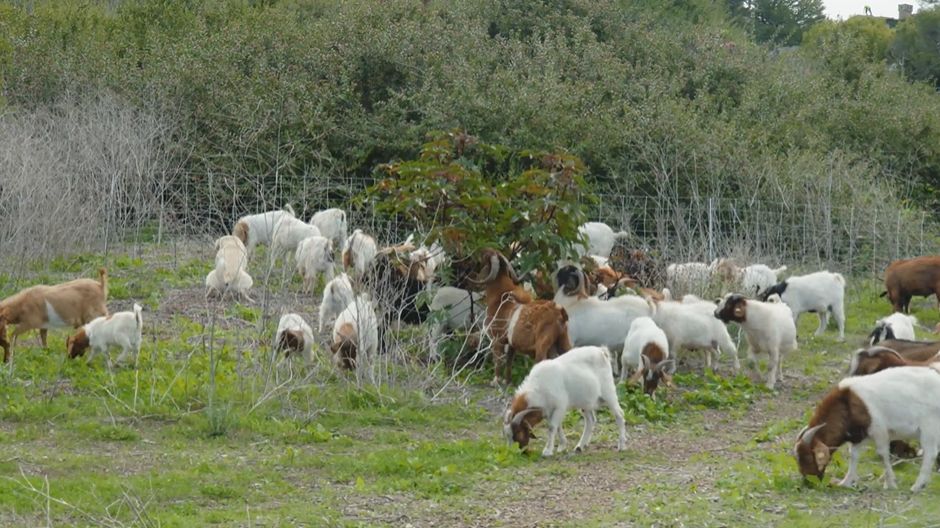For thousands of years, gray whales have taken the longest annual migration of any mammal, starting in the arctic, down the California coast to find refuge along Mexico's Baja peninsula. But a couple of years ago, their migration took a fatal turn as bodies of California gray whales began washing ashore. Investigative environmental reporter Susanne Rust and photographer Carolyn Cole traveled up and down the coast to learn about our changing oceans and the devastating byproduct. In an interview for "LA Times Today," Rust and Cole joined host Lisa McRee with more.
Gray whales were a conservation success story after protections were put in place, and they rebounded from near extinction until 2018.
"Like most whales off of the Pacific coast and definitely on the Atlantic coast, they were hunted. In the 1800's, early 1900's, they were hunted to commercial extinction," Rust said. "And then, in the 1970s, Congress enacted the Marine Mammal Protection Act, and it did just what it was supposed to do in protecting these animals, which were no longer coastline. And the population rebounded again from near commercial extinction to almost 27,000 in 2016 — just a phenomenal conservation success story. But, 20 years ago, there was a dip in the population. It rebounded, but then again in 2018, in December, they started dying. And this was first noticed in Mexico. Bodies started washing up on the shore in places where they usually don't wash up. But that year started with two at the end of December, and then several dozens more started coming up in January and February. So it was a mess, and scientists were really concerned."
Scientists believe various factors may have caused more gray whales to die.
"The whales feed every year in Alaska, and then they flood the coastline; they go all the way down to Mexico," Rust added. "And they hang out in Mexico for a while and go right back up. But they go through so much during their journeys. There is shipping traffic; these huge cargo vessels go across the Atlantic, and they're going right to where the whales are swimming. I mean, just sort of everything out there. There's fishing gear; there is the pollution that comes out of our sewage system. It washes into the coastal waters where they're going through. There are naval boats that are doing different kinds of sonic testing below the water. Scientists are trying to figure out what's going on. They have so many things they have to look at. It's tough to narrow down which one of these things is happening. Plus, there's climate change hanging out over the whole thing."
LA Times photographer Carolyn Coles got to photograph these whales, and she said it was challenging to capture some of the images.
"Well, I traveled from Washington State, then Oregon, and then down the coast to California. Occasionally, we would get a call that a whale had stranded itself or had washed up onshore," Coles said. "So I'd fly to Northern California or wherever that was to try to document that. And then, I took some whale-watching trips, but it wasn't easy. These whales don't jump that often out of the water. So it was tough to get enough photographs to cover the project."
Scientists, citizens and biologists are trying to gather data on the gray whales' behaviors and journeys.
"So, scientists went on full force at the beginning of 2020, and then the pandemic hit, and scientists couldn't get out," Rust said. "Instead, there were people all up and down the coastline who were stranded at their houses. Many of these people are retired biologists, retired marine biologists and amateurs who love whales; they got out to the coast and started watching. And we met one couple in particular, up in Point Arena, who used to live on the East Coast. They go back there now every summer, but they were stranded this particular year in Northern California. And, every day, they went out, and they watched the whales and took notes of how many whales they saw and which way they were going. They collected this amazing database that provided new information about whales off the coast of Point Arena that nobody had ever observed or seen before."
Overall, the gray whale mortality rate is raising concerns for the ocean and other species.
"So, the oceans are changing," Rust said. "There's no doubt about that. But it's not just happening in the Pacific Ocean; it's happening everywhere. And so we have the Bowhead whales of the North Pacific, for instance, always used to show up in one area to feed for the last two years, and they haven't even shown up. There is just so much going on, and there's a heightened concern. There's a lot of concern that things are drastically changing and the trend is changing. And so this may not just be a dip; this may be an indication of something bigger happening."
Watch "LA Times Today" at 7 and 10 p.m. Monday through Friday on Spectrum News 1 and the Spectrum News app.











